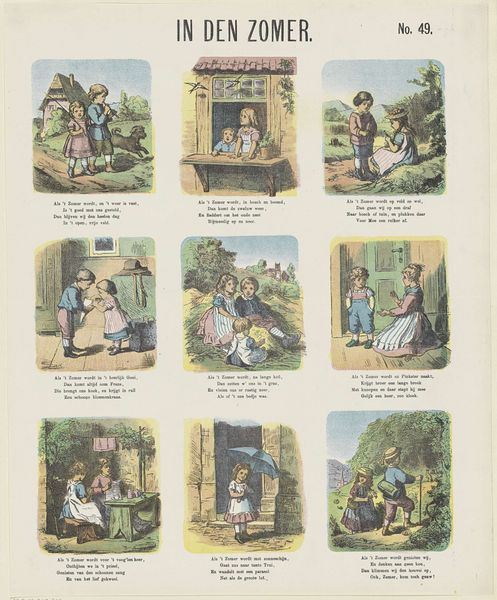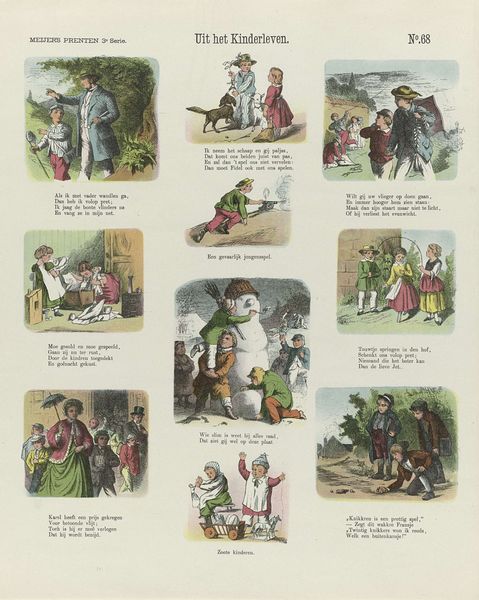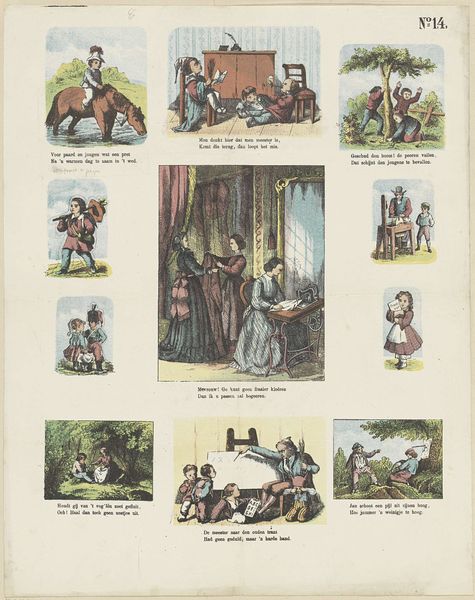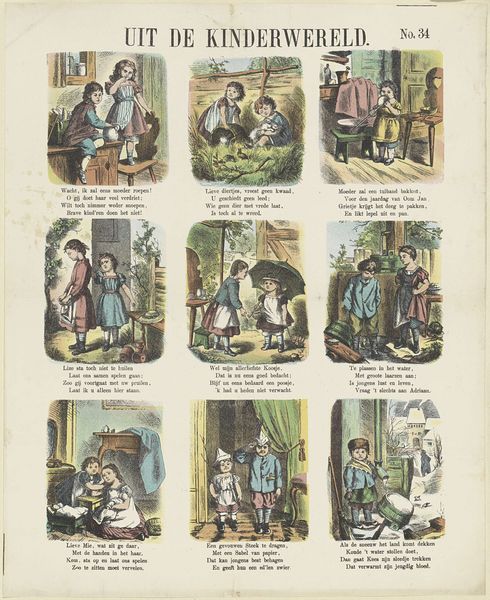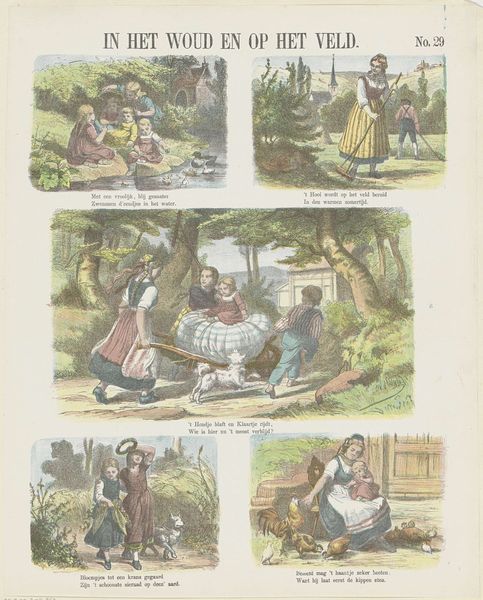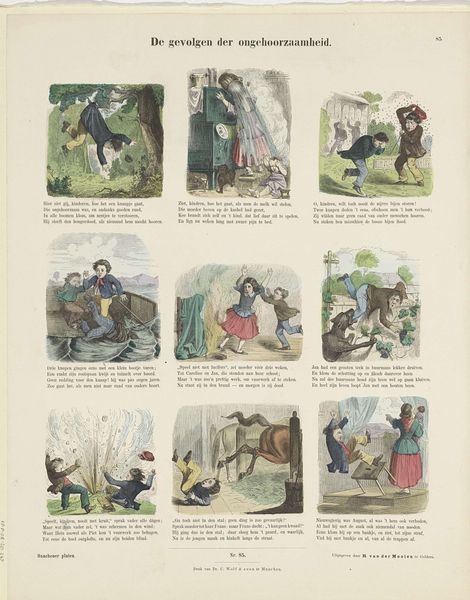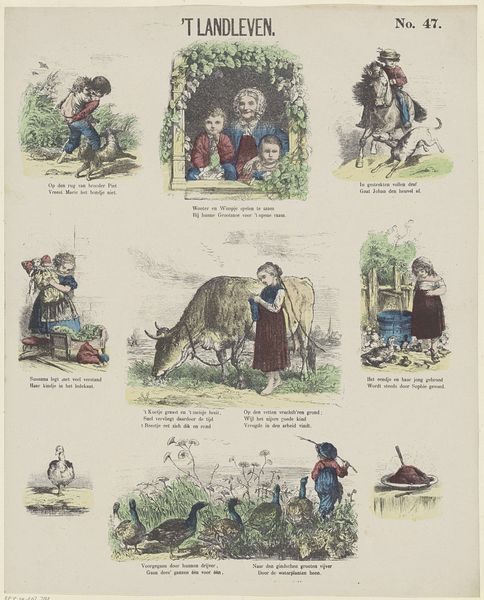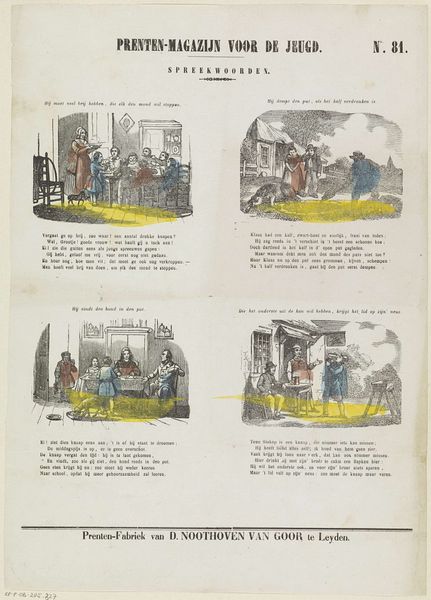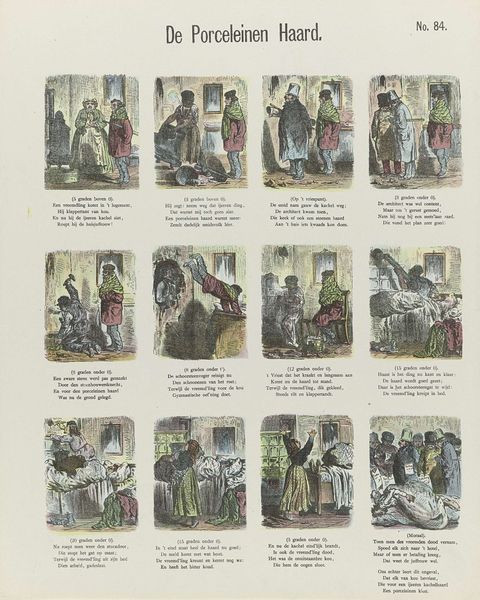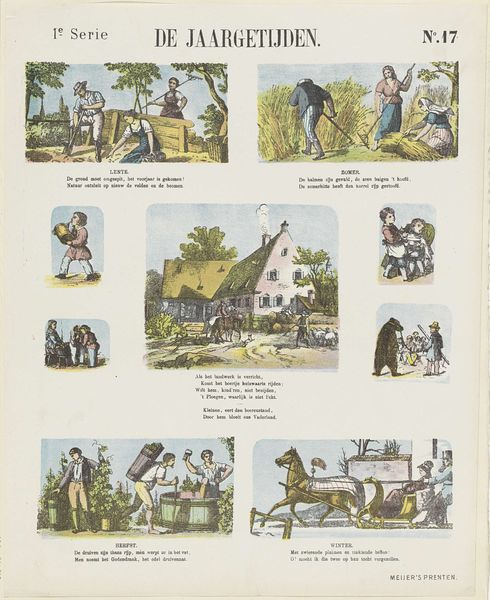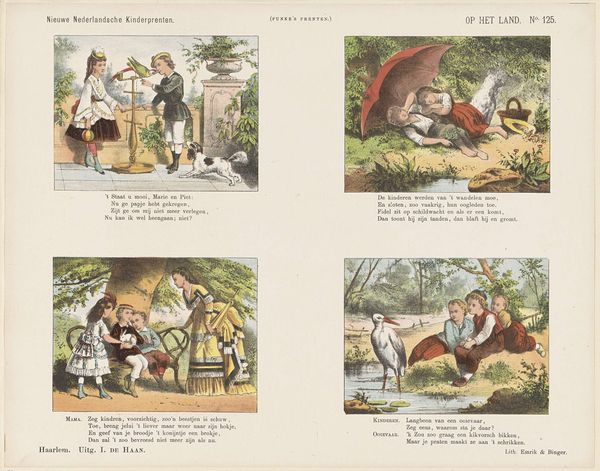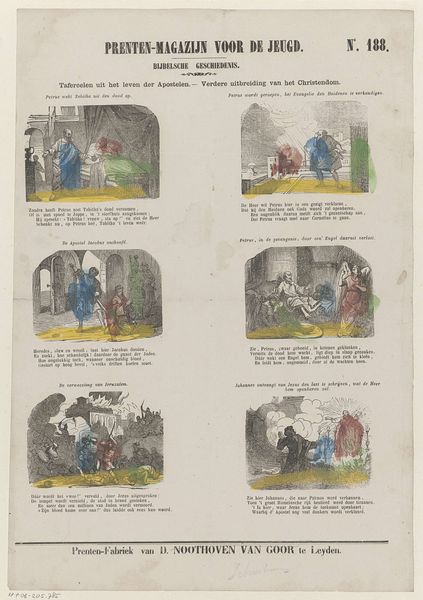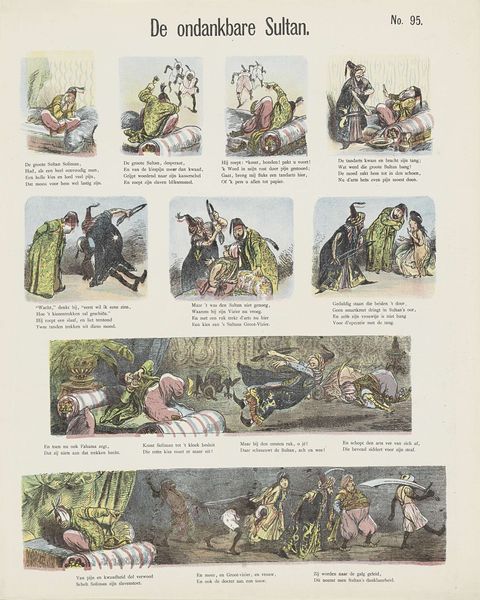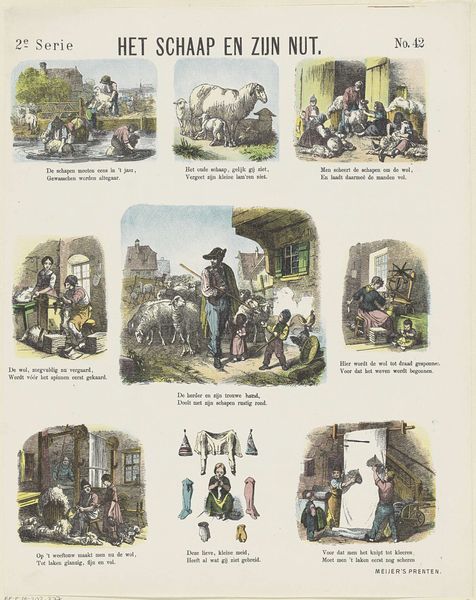
print, watercolor
#
narrative-art
# print
#
watercolor
#
genre-painting
#
watercolor
Dimensions: height 425 mm, width 338 mm
Copyright: Rijks Museum: Open Domain
Curator: This print, "The Consequences of the First Cigar," dated 1874, offers a glimpse into 19th-century Dutch society's anxieties around youth and transgression, presented almost like a cautionary tale. Editor: It’s fascinating! It’s watercolor, a simple medium, but the composition feels quite busy with all these vignettes. What do you see in this piece beyond the surface level narrative? Curator: I see a critique of societal expectations and class distinctions subtly woven in. The children, likely from affluent backgrounds indicated by their attire, are engaging in activities usually reserved for adults, symbolizing a disruption of the established order. Smoking a cigar, in this context, becomes a symbol of rebellion, a quest for adulthood that is both humorous and unsettling. It prompts reflection on how social norms are constructed and how their violation impacts the community. Editor: So you’re suggesting that it’s not just about naughty children, but it comments on broader power structures? The contrast in how each vignette presents authority figures responding to the children makes me wonder how it reflects the differing expectations for boys versus girls. Curator: Precisely. Think about how these actions, particularly the consequences faced, may reflect a commentary on social mobility. Who gets punished? And who gets a slap on the wrist? What does that tell us about privilege? We must always read art through an intersectional lens; otherwise we risk replicating harmful power imbalances. Editor: I hadn't considered that! It shifts the focus from simple mischief to how social class influences experiences. This is very thought provoking and it certainly does present social constructs, norms and traditions in pictorial form. I appreciate the way your analysis brings contemporary theory into play. Curator: And I think considering contemporary perspectives to works in context helps us view these types of works in an even more revealing light.
Comments
No comments
Be the first to comment and join the conversation on the ultimate creative platform.
